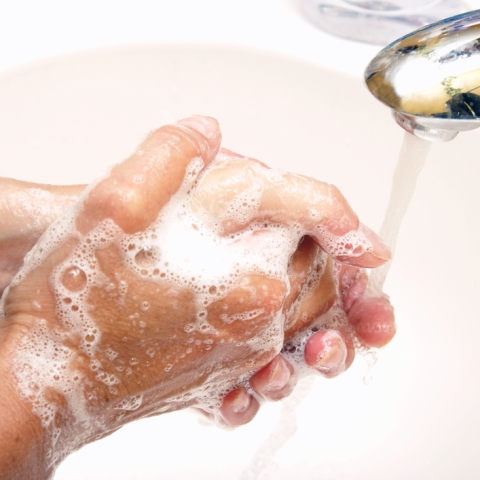The way hospitals measure and report hand hygiene rates does not accurately reflect the true compliance rates of healthcare providers, according to a newly published study.
“The current measurement and reporting system for hand hygiene rates overestimates how often healthcare providers clean their hands, because it doesn’t account for the natural changes in behaviour that happen when healthcare providers know they are being watched,” says Dr. Jerome Leis, lead author of the study and staff physician, general internal medicine and infectious diseases at Sunnybrook Health Sciences Centre.
The study also found that this natural change in behaviour, known as the Hawthorne effect, might lead to invalid comparisons between different groups of healthcare providers.
“Across the province, institutions report hand hygiene rates of around 90%, but physicians are often reported to have much lower hand hygiene compliance than other healthcare providers. We wanted to find out whether this group was truly less likely to clean their hands, or if lower compliance rates among physicians were because of issues with the observational method itself,” says Dr. Leis.
In the current system, a designated auditor carries out regular hand hygiene audits, and healthcare providers are often aware they are being evaluated. Results can be grouped by profession, unit or program area. This approach is used to benchmark performance in institutions throughout Ontario.
For this study, two students were trained to covertly measure hand hygiene compliance during their clinical rotations at Sunnybrook between May 27, 2015 and July 31, 2015. Students rotated in the emergency department, general medical and surgical wards for up to a week at a time.
At the end of the study period, the covert student observers reported an overall hand hygiene compliance rate of 50 per cent, versus the 84 per cent compliance rate recorded by hospital auditors during the same time frame. The researchers also found the performance gap between groups of healthcare providers closed significantly when no one knew that hand hygiene was being measured.
“These findings show that hand hygiene is a problem across all groups of healthcare providers, not just physicians,” says Dr. Mary Vearncombe, study co-author and Medical Director, Infection Prevention and Control. She also notes that while the study provides a more accurate picture of hand hygiene rates, Sunnybrook’s hand hygiene has improved over the last ten years, as evidenced by the concurrent reduction in the transmission of super-bug infections like MRSA.
A benefit of the current hand hygiene reporting and measurement system is that direct observation offers in-the-moment feedback and educational opportunities, as well as a chance to reward staff who were “caught clean handed”. “Different methods for measuring are complimentary, not mutually exclusive,” says Dr. Vearncombe.
One of the most important factors that influenced the hand hygiene compliance of physician teams was whether attending physicians cleaned their hands. The study found compliance rates increased significantly to 80 per cent when attending physicians cleaned their hands, versus a decrease to as low as 20 per cent when attending physicians did not clean their hands.
“Given that the new academic year begins in July with new resident physicians on the ward, this study underscores the importance of role modeling hand hygiene behaviors that can shape long-term practice patterns,” says Dr. Leis.
Based on the findings from this study, “we are working with other hospitals across the Greater Toronto Area to implement new ways of measuring hand hygiene compliance, including electronic monitoring, with the goal of improving patient safety,” says Dr. Leis.


